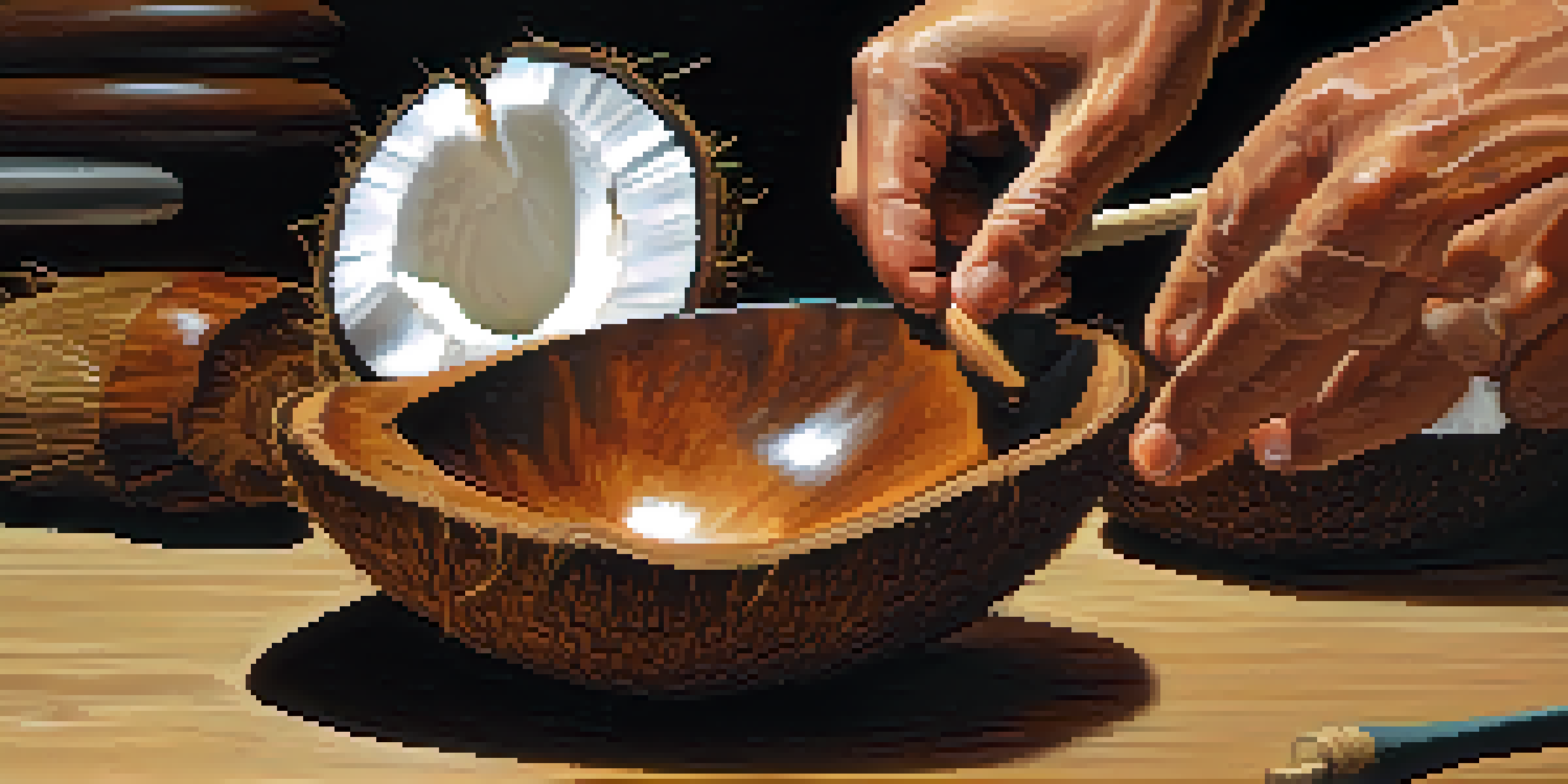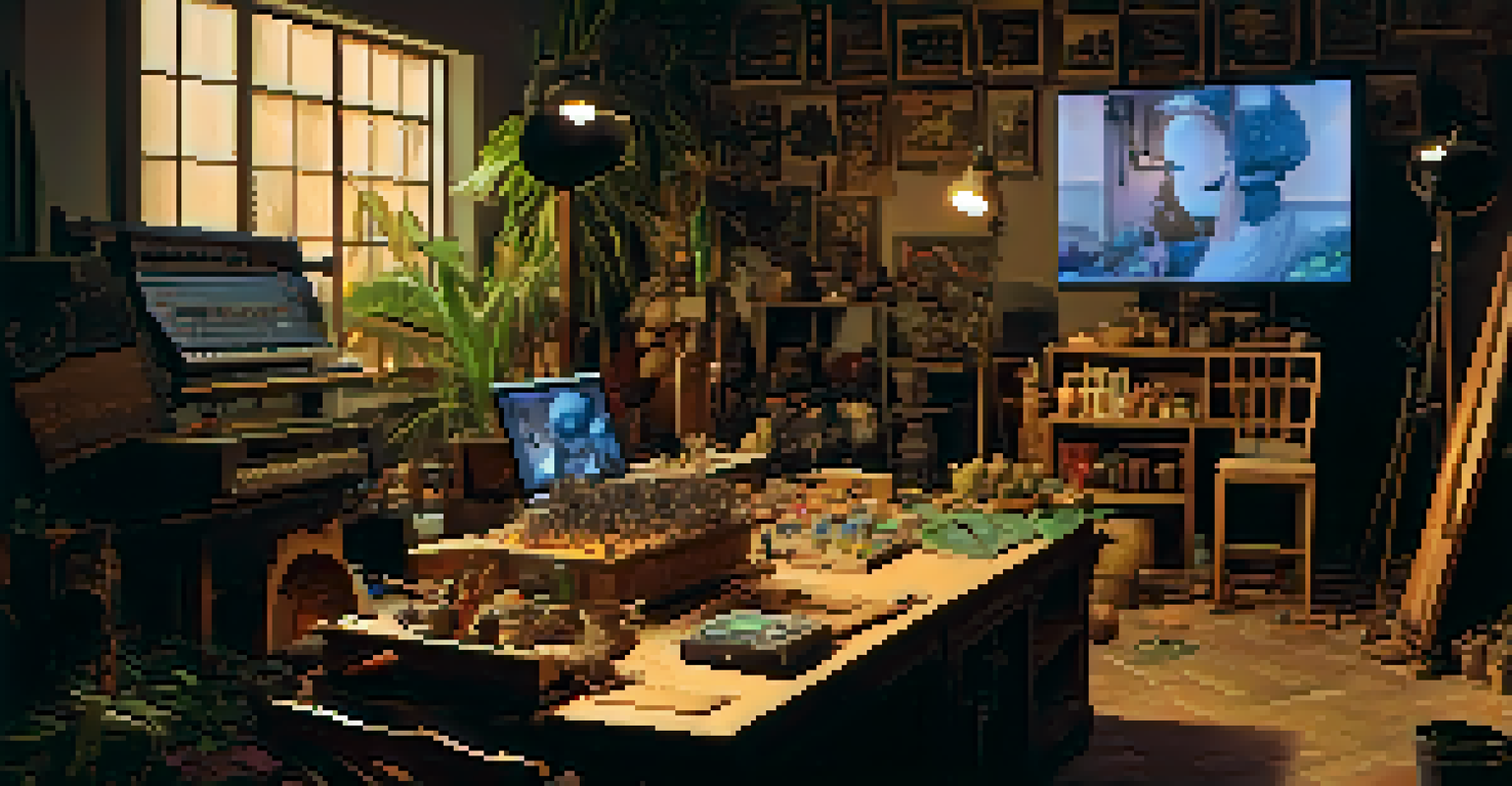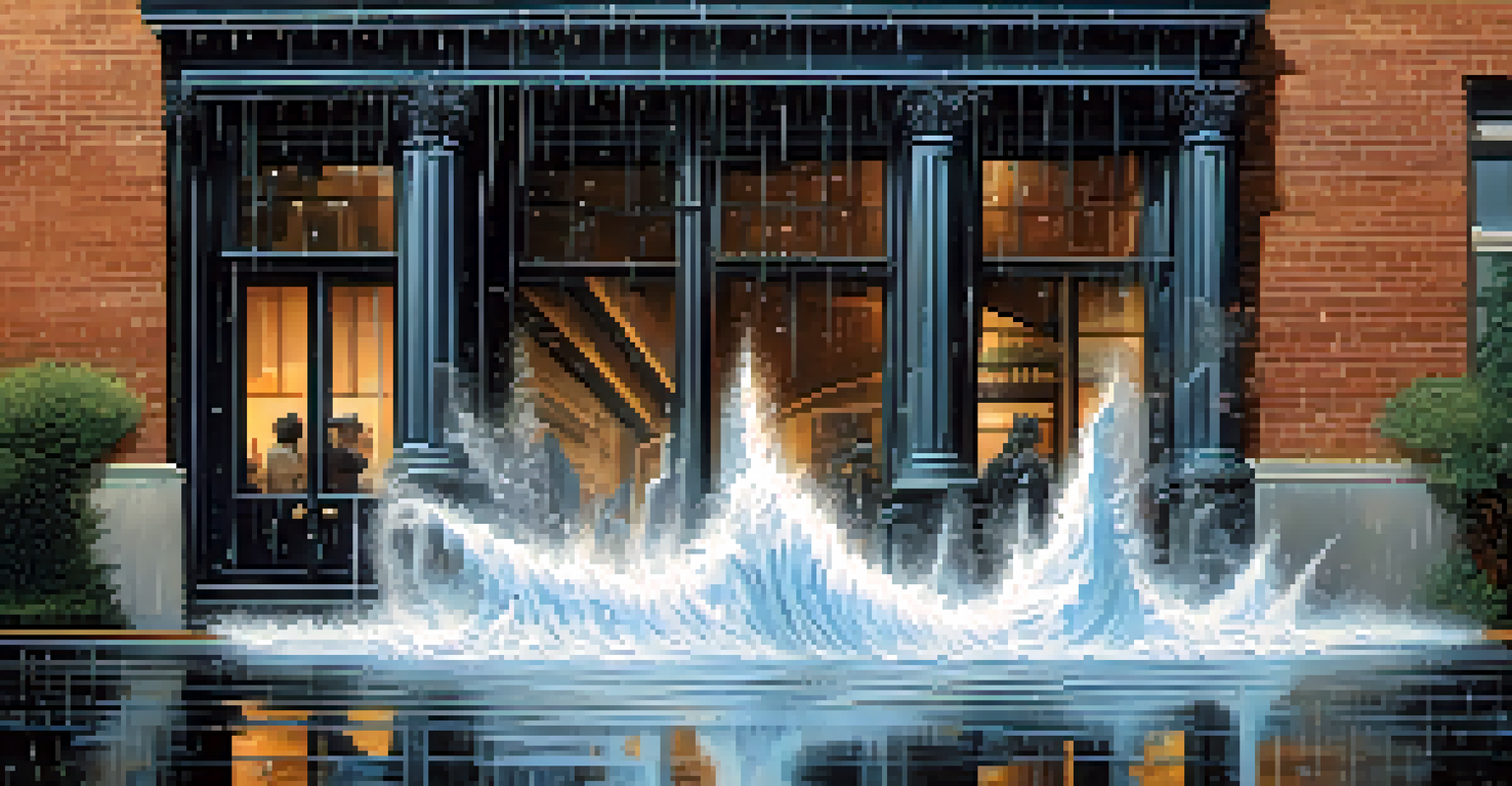The Art of Foley: Crafting Realistic Sounds in Film

What is Foley and Why is it Important in Film?
Foley refers to the reproduction of everyday sound effects that are added to films in post-production. These sounds can range from footsteps and rustling clothes to the clinking of glasses. The importance of Foley lies in its ability to enhance the audience's immersion in a film, making scenes feel more dynamic and realistic.
Sound is a huge part of storytelling. It's the emotion behind the visuals.
Imagine watching a thrilling chase scene without the sound of running feet or the swish of clothes. It would feel flat and lifeless. Foley artists meticulously craft these sounds to draw viewers deeper into the story, almost like adding the final brushstrokes to a painting.
Ultimately, Foley creates a richer audio landscape that supports the narrative, making it an essential element in the filmmaking process. By filling in the auditory gaps, Foley helps transport audiences into the film's world.
The History of Foley: From Silent Films to Today
The term 'Foley' is named after Jack Foley, a sound effects artist who developed techniques that are still used today. In the early days of cinema, films were often silent, and live musicians played in theaters to provide sound. As technology evolved, so did the need for more sophisticated sound design.

During the transition to sound films in the late 1920s, filmmakers recognized that recorded sounds could elevate a film's emotional impact. Jack Foley pioneered many techniques, creating sounds live in sync with the film, which laid the foundation for modern sound design.
Foley Enhances Film Immersion
Foley sound effects enrich the viewing experience by making scenes feel more dynamic and realistic.
Now, Foley has transformed into an art form, with artists employing a variety of props and techniques to create sounds that enhance storytelling. This historical evolution showcases the creative ingenuity behind the art of Foley and its profound influence on the film industry.
How Foley Artists Create Sounds: Tools and Techniques
Foley artists use an array of tools to create realistic sounds, often relying on everyday objects to replicate specific noises. For instance, they might use a coconut shell to mimic horse hooves or crunching leaves to replicate footsteps on gravel. This resourcefulness is key in crafting believable audio.
Foley is the art of making sound, of making a world feel real.
The process usually involves watching the film clips and timing the sounds to match the visuals precisely. Foley artists are like musicians, ensuring that every 'note' aligns perfectly with the action on screen. This synchronization is crucial for maintaining the audience’s immersion.
Additionally, Foley artists often collaborate closely with sound designers and directors to understand the emotional tone of each scene. This collaboration ensures that the sounds not only fit but also enhance the storytelling, making the entire experience more impactful.
The Role of Foley in Building Atmosphere and Emotion
Foley plays a vital role in establishing the atmosphere of a film. The sounds that accompany scenes can evoke emotions, set the tone, and even hint at a character's state of mind. For example, the creaking of a door can instill a sense of suspense, while the soft sound of rain can create a feeling of calm.
Consider a horror movie: the subtle background noises, like distant whispers or the scuffling of feet, can heighten tension and keep viewers on edge. These carefully crafted sounds are what make a scene feel alive and impactful, allowing audiences to experience a deeper emotional connection.
Foley's Historical Evolution
Named after Jack Foley, this craft has evolved from live sound in silent films to a sophisticated art form in modern cinema.
Ultimately, Foley helps filmmakers achieve their vision by ensuring that every sound contributes to the narrative. This intricate relationship between sound and emotion is what makes Foley an indispensable part of storytelling in film.
Foley vs. Sound Effects: Understanding the Difference
While both Foley and sound effects contribute to a film's audio landscape, they serve different purposes. Sound effects are typically pre-recorded sounds that are added to a film, while Foley is created live in sync with the action. This distinction is crucial in understanding how each element enhances the viewing experience.
For instance, a sound effect might include an explosion or a gunshot that is sourced from a library of sounds, whereas Foley captures the nuances of characters interacting with their environment. This live creation allows for a more tailored, organic sound that feels authentic to the scene.
By utilizing both Foley and sound effects, filmmakers can create a rich and immersive audio experience. This blend of pre-recorded and live-created sounds ensures that every auditory detail is crafted to support the storytelling.
The Challenges Foley Artists Face in Their Craft
Foley artists encounter various challenges in their work, making their craft both demanding and rewarding. One significant hurdle is creating sounds that match the film's action while ensuring they remain believable. This requires not only creativity but also an acute attention to detail.
Weather conditions can also pose obstacles, especially when replicating outdoor sounds. For example, creating rain sounds indoors might involve using various techniques and materials to achieve the right effect. This adaptability is essential for Foley artists to deliver high-quality work.
Foley vs. Sound Effects Explained
While both contribute to film audio, Foley is created live in sync with the action, adding a tailored and organic sound.
Additionally, the pressure of meeting tight deadlines can be intense, as Foley work often takes place during the final stages of film production. Despite these challenges, many Foley artists thrive in their roles, driven by a passion for storytelling and the art of sound.
The Future of Foley: Trends and Innovations
As technology advances, the art of Foley continues to evolve, incorporating new tools and techniques. Innovations in sound design software and recording equipment are allowing Foley artists to create even more intricate sounds. This evolution opens up exciting possibilities for enhancing film audio.
Virtual reality (VR) and augmented reality (AR) also present new opportunities for Foley artists. In these immersive environments, sound plays a crucial role in creating an engaging experience, and Foley techniques will likely adapt to meet the unique demands of these formats.

Ultimately, the future of Foley looks bright, as artists continue to push the boundaries of sound creation. By embracing new technologies while honoring traditional techniques, Foley artists will keep enriching the cinematic experience for generations to come.